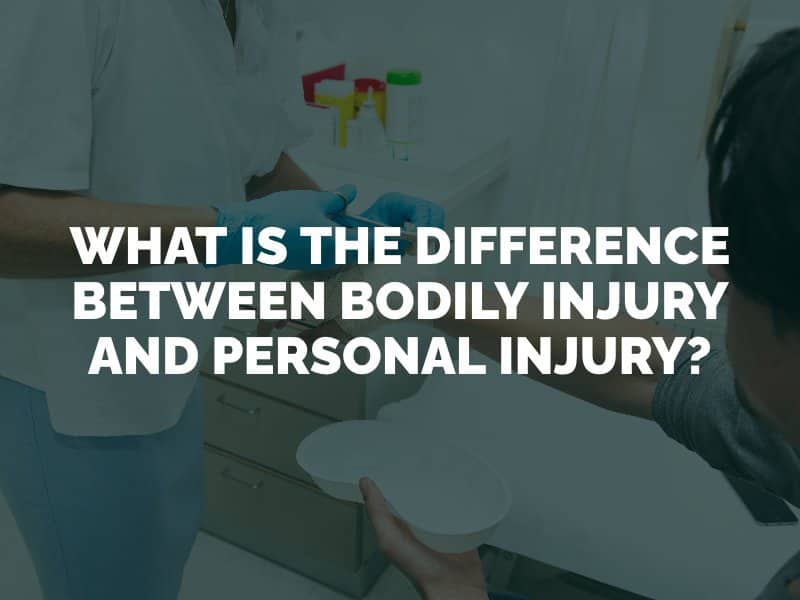Frequently, the terms “bodily injury” and “personal injury” are used interchangeably. Although they seem similar since they are both used in legal contexts and relate to harm done to a person, there are significant differences between them.

Bodily injury refers to physical bodily harm and injury, illness, or disease that results from an accident. Common types of bodily injury include burns, nerve damage, broken bones, poisoning, bruises, and more. Bodily injury is a more specific subset of personal injury. When you suffer bodily injury due to someone else’s actions, you can file a personal injury claim against them.
Personal injury often includes other types of harm than physical bodily harm, such as pain and suffering, loss of companionship, emotional distress, anxiety, PTSD, and depression, among others.
If you file a personal injury lawsuit based on bodily injury you suffered, you may be entitled to the following compensation:
In a car accident case or any other type of personal injury claim, you typically need to show that the other party was negligent in order to obtain monetary compensation. To prove negligence, the following elements must be met:
As the victim, you will need to prove that the defendant owed you a duty of care. In a car accident case, for example, this will be fairly simple. All drivers are required to use reasonable care to keep other drivers safe.
After showing that the other party owed you a duty of care, you must show that they breached this duty. In a car accident claim, you can do this by showing that they failed to use reasonable care while driving. This could be evidence that they were texting while driving, driving under the influence, speeding, or that they were simply distracted by other individuals in the car with them.
The next element you must prove is that the defendant’s conduct caused your injuries. If the defendant was negligent but their negligence had nothing to do with the accident, this won’t be enough to prove this element. There must be actual causation.
Finally, you must show that you actually suffered harm or damages. This could be property loss, medical expenses due to physical injuries, or lost wages due to being unable to work after the accident, among others.
Some people are also confused about the difference between personal injury protection (PIP) and bodily injury liability coverage. PIP covers your medical expenses related to an injury. This can include doctor’s visits, rehabilitation costs, lost income, and more. Bodily injury liability coverage includes payments for other people’s physical injuries that occur in an accident that you were responsible for.
For personal injury lawsuits relating to bodily injury and other emotional injuries, Colorado is governed by modified comparative negligence. This means that even if you were partially at fault for your injuries, you may still be able to collect compensation. The plaintiff’s monetary award will be reduced by the amount that they are found responsible. Most importantly, a plaintiff will not be able to recover any compensation if they are 50 percent or more responsible.
If you have any questions or need help filing any type of personal or bodily injury claim, contact a Denver personal injury attorney today to set up a free consultation.